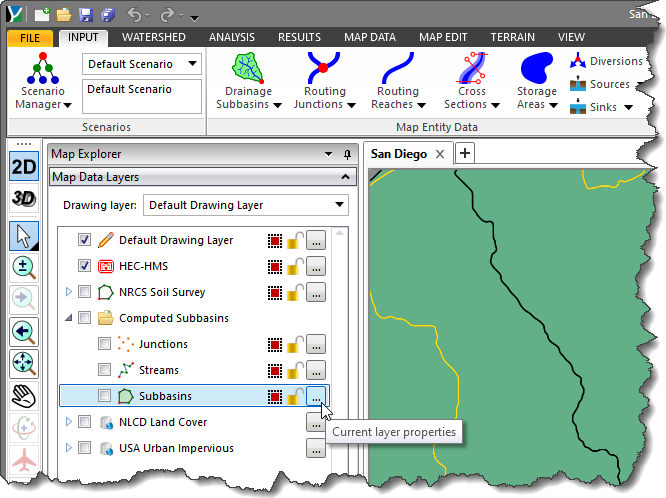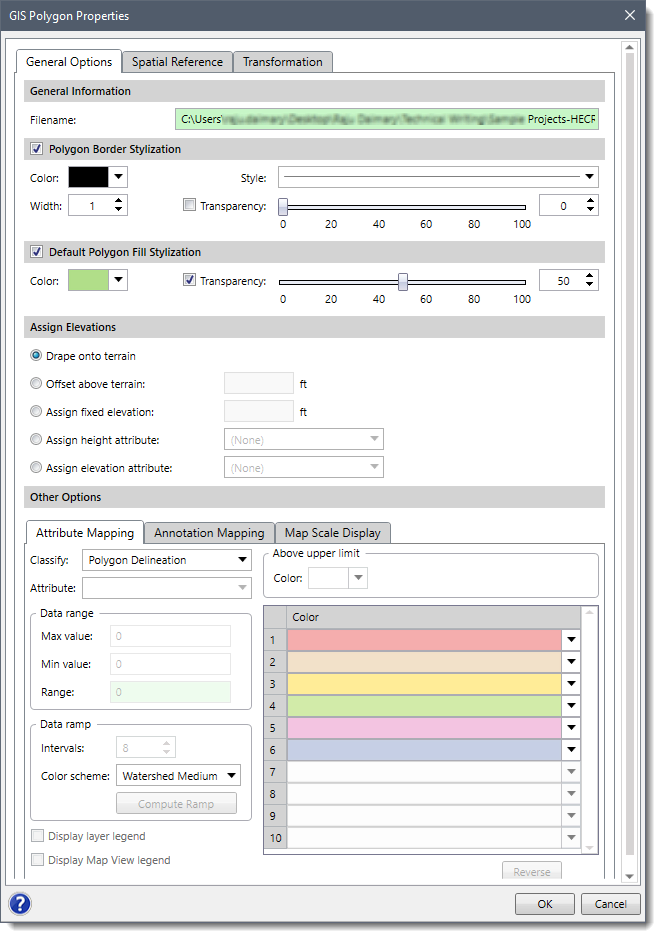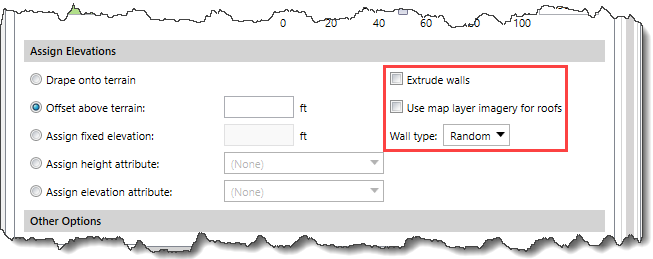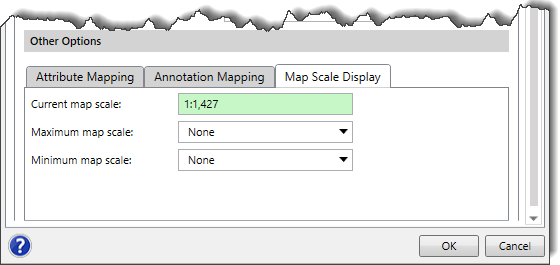
Welcome to CivilGEO Knowledge Base
Welcome to CivilGEO Knowledge Base

Welcome to CivilGEO Knowledge Base
Welcome to CivilGEO Knowledge Base
The GIS Element Properties dialog box allows the user to define various GIS elements and their properties, style the border associated with the element, and change the image’s transparency. Furthermore, it also allows the user to change the CRS (coordinate reference system) of the current project and automatically apply the transformation scale factor to any layer to accurately map it to the project CRS.
Following are the types of GIS Element Properties dialog boxes for the GIS elements: polygons, polylines, and points, respectively:
In this article, we will use the GIS Polygon Properties dialog box to demonstrate and describe the GIS Element Properties dialog box of the CivilGEO software.
Follow the steps below to use the GIS Polygon Properties dialog box:
 Note that the user must follow the same step to access the GIS Element Properties dialog box for the other GIS element types, such as point and polyline.
Note that the user must follow the same step to access the GIS Element Properties dialog box for the other GIS element types, such as point and polyline.
The GIS Polygon Properties dialog box contains three tabs as described below:
Various sections of the General Options tab are described below:
This section contains read-only information about the location of the element properties file and the file name.
This section is associated with the border of the polygon. It allows the user to set its color, width, style, and transparency. Note that the Polygon Border Stylization checkbox is selected by default.
This section provides options for the user to fill the polygon with color and adjust the transparency so that you can see through the polygon to the background Base Map. A transparency value of 40 to 50% works well. Note that the Default Polygon Fill Stylization checkbox is selected by default.
This section is used to assign elevation to elements. The following radio button options are available:
In addition, the following options are available in this section. Note that these options are available only when the user has selected an option other than the Drape onto terrain option.


This section is divided into the following three panels:

The Spatial Reference tab allows the user to manually assign the project’s CRS to the non-CRS referenced data layer coordinates if the data layer lies within the project’s CRS. Refer to this article in our knowledge base to learn more about spatial reference.
The Transformation tab allows the user to automatically apply the transformation scale factor to any particular layer and accurately map it to the project coordinate reference system (CRS). Refer to this article in our knowledge base to learn more about layer transformation.
 1-800-301-02-955
1-800-301-02-955
 608-729-5100
608-729-5100
(US and Canada)
 [email protected]
[email protected]
 +1 608-729-5100
+1 608-729-5100
CivilGEO India
Graphix Tower, A-13 A
3rd Floor, Sector 62
Noida, Uttar Pradesh 201309
IndiaTel:
1-800-301-02-955 or
+91 022-3831-8601
CivilGEO United States
8383 Greenway Blvd
6th Floor
Middleton, WI 53562
USATel:
608-729-5100 or
800-488-4110
Copyright © CivilGEO, Inc. All rights reserved. The CivilGEO logo, “GeoHECHMS”, “GeoHECRAS”, and “Ready To Engineer” are registered trademarks of CivilGEO,
Inc. All other brands, company names, product names or trademarks belong to their respective holders.
We use cookies to give you the best online experience. By agreeing you accept the use of cookies in accordance with our cookie policy.
When you visit any web site, it may store or retrieve information on your browser, mostly in the form of cookies. Control your personal Cookie Services here.
The ZoomInfo WebSights snippet drops three cookies to track Unique Visits:
1. _pxhd - Related to the Perimeter X security layer (Perimeter X isused to prevent bot attacks).
2. _cfduid - Related to the CloudFlare security layer (CloudFlare is the Network Security protocol that ZoomInfo uses to orchestrate the rate limiting rules).
3. visitorId - This is how WebSights identifies recurring visitors








